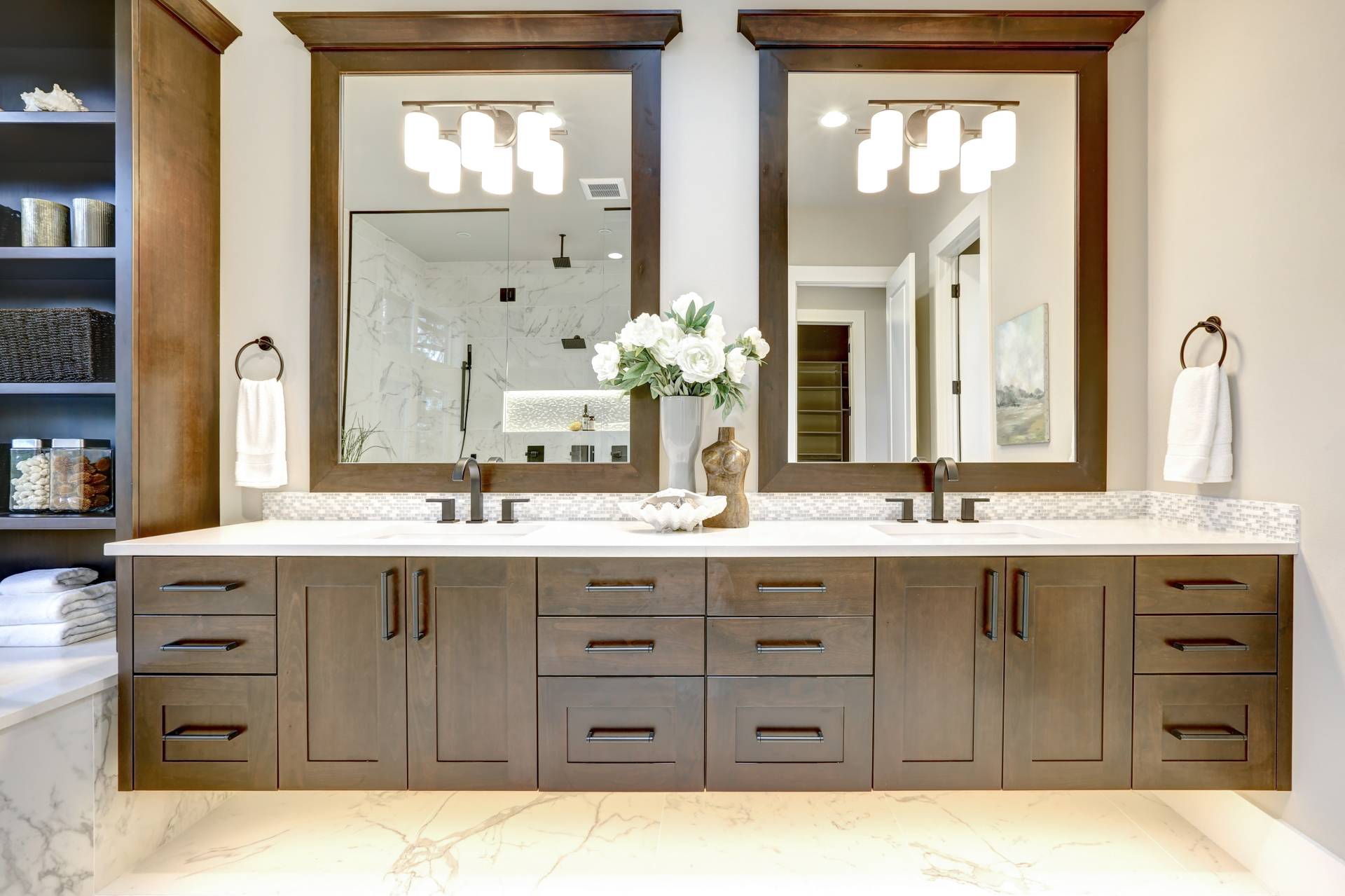Preparing for Refinishing

Preparing your bathroom cabinets for refinishing is crucial for a successful and long-lasting outcome. This involves several steps to ensure a smooth and even surface for applying paint or stain.
Cleaning the Cabinets, Bathroom cabinet refinishing ideas
Cleaning your bathroom cabinets thoroughly removes dirt, grime, and any existing coatings. This ensures that the refinishing process adheres properly to the surface.
- Use a mild detergent and warm water to wipe down the cabinet surfaces. Avoid harsh chemicals that could damage the wood.
- Pay special attention to areas prone to buildup, such as handles, hinges, and corners.
- Use a soft cloth or sponge to avoid scratching the wood.
- Rinse the cabinets thoroughly with clean water and allow them to dry completely before proceeding to the next step.
Sanding the Cabinets
Sanding the cabinets is essential to create a smooth surface for paint or stain. It also helps to remove any imperfections, such as scratches, dents, or old coatings.
- Start with a coarse-grit sandpaper (80-120 grit) to remove any significant imperfections.
- Gradually progress to finer grits (120-220 grit) to smooth out the surface.
- Use a sanding block or orbital sander for even sanding.
- Sand with the grain of the wood to avoid creating scratches.
- Wipe away sanding dust with a damp cloth before moving on to the next step.
Patching Imperfections
Patching any imperfections, such as holes or cracks, before refinishing is crucial for a smooth and even finish.
- Use wood filler to fill in any holes or cracks.
- Apply the filler according to the manufacturer’s instructions.
- Allow the filler to dry completely before sanding it smooth with fine-grit sandpaper.
Essential Tools and Materials
| Tool/Material | Description |
|---|---|
| Mild detergent | For cleaning the cabinets |
| Warm water | For cleaning the cabinets |
| Soft cloth or sponge | For cleaning and wiping |
| Sandpaper (80-120 grit, 120-220 grit) | For sanding the cabinets |
| Sanding block or orbital sander | For even sanding |
| Wood filler | For patching imperfections |
| Putty knife | For applying wood filler |
| Paint scraper | For removing old paint or coatings |
| Dust mask | For protecting your respiratory system |
| Safety glasses | For protecting your eyes |
| Gloves | For protecting your hands |
Safety Precautions
- Always wear a dust mask and safety glasses when sanding to protect your respiratory system and eyes from dust particles.
- Work in a well-ventilated area to avoid inhaling sanding dust.
- Use gloves to protect your hands from irritation or splinters.
- Take breaks when needed to avoid fatigue.
Refinishing Techniques: Bathroom Cabinet Refinishing Ideas
:strip_icc()/double-vanity-ideas-1-erin-williamson-design-hill-country-lake-house-6857062a43964338b557315bacc7424f.jpg)
Refinishing your bathroom cabinets can be a great way to give them a fresh look and update the style of your bathroom. There are several different refinishing techniques you can use, each with its own advantages and disadvantages.
Choosing the Right Paint or Stain
Selecting the right paint or stain is crucial for achieving a successful and long-lasting finish. Consider these factors:
- Cabinet Material: Different materials require different types of paint or stain. For example, wood cabinets can be painted or stained, while laminate cabinets are typically best suited for painting.
- Desired Aesthetic: Think about the overall look you want to achieve. Do you want a bold, modern look, or a classic, traditional feel? This will help you narrow down your choices of paint colors, stain colors, and finishes.
- Durability: Bathroom cabinets are exposed to moisture and humidity, so it’s important to choose a paint or stain that can withstand these conditions. Look for paints that are specifically formulated for high-moisture areas, or consider using a sealant to protect your finish.
Painting Techniques
Painting is a popular and versatile refinishing technique for bathroom cabinets. Here’s how to do it right:
- Prepare the Cabinets: Start by cleaning the cabinets thoroughly to remove dirt, grime, and any existing finish. If you’re working with wood cabinets, sand them down to create a smooth surface for the paint to adhere to. Use a primer specifically designed for cabinets, as this will help the paint adhere better and create a more durable finish.
- Apply the Paint: Use a high-quality paintbrush or roller to apply the paint evenly. Start with thin coats and allow each coat to dry completely before applying the next. For a smooth, professional finish, consider using a paint sprayer.
- Protect the Finish: Once the paint is dry, apply a sealant to protect the finish from moisture and humidity. This will help keep your cabinets looking their best for years to come.
Staining Techniques
Staining is a great option for highlighting the natural beauty of wood cabinets. Here’s how to stain your bathroom cabinets:
- Prepare the Cabinets: Clean the cabinets thoroughly and sand them down to create a smooth surface. The sanding process should be done with progressively finer grits of sandpaper, ensuring that the surface is smooth and free of any scratches or imperfections.
- Apply the Stain: Use a brush or cloth to apply the stain evenly to the cabinet surfaces. Work in the direction of the wood grain for a natural look. Allow the stain to dry completely before applying a sealant.
- Protect the Finish: Apply a sealant to protect the stain from moisture and humidity. A polyurethane sealant is a popular choice for bathroom cabinets. It’s important to apply the sealant evenly and allow it to dry completely before using the cabinets.
Combining Painting and Staining
You can also combine painting and staining techniques to create unique and stylish finishes. For example, you can paint the cabinet doors and drawers a solid color, then stain the cabinet frames to create a contrasting effect.
